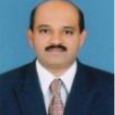
Sachin Patil
Work place: Department of Computer Science and Engineering (AI&ML), K. E. Society‘s, Rajarambapu Institute of Technology, Rajaramnagar, Affiliated to Shivaji University Kolhapur, MH, India
E-mail: sachin.patil@ritindia.edu
Website: https://orcid.org/0000-0002-6247-2295
Research Interests:
Biography
Sachin Patil was born in Mumbai, India, in 1981. He received the B.E. degree in computer science and engineering and M. Tech. in computer science and technology from the Shivaji University, Kolhapur in 2003 and 2011 respectively. He has been awardedwith a Ph.D. degree in computer science and engineering under A.I.C.T.E. Q.I.P. scheme at Walchand College of Engineering (Govt. aided and an Autonomous Institute) affiliated to Shivaji University, Kolhapur, MH India.
Since 2003, he has been working as an Assistant Professor in the Computer Science and Engineering Department, Rajarambapu Institute of Technology, Rajaramnagar, MH – India. He has worked as head of Computer Science and Engineering department at Rajarambapu Institute of Technology, Rajaramnagar, MH – India. He is the author of two book chapters viz. Springer-Verlag and Taylor and Francis. He has more than 15 research papers in renowned conferences and journals. His research interests include Database Engineering and Big Data analytics. He has received a ―Distinguished Facilitator‖ award at Inspire faculty contest organized by Infosys, Pune. Currently he awarded with ―Best Teacher Award‖ by ISTE MH-Goa section and ―Teaching Leadership Award‖ by IUCEE at ICTIEE 2024. Additionally, his research presentations have been awarded twice with ―Best Paper Award‖ at Research Symposium conducted under ACM chapter at WCE, Sangli. He was also invited for a Plenary Speech by WSEAS organized conference at Cambridge, UK and as Session Chair in IEEE Executed Conference at San Francisco, US.
Author Articles
Underwater Image Refinement: Color Distance and Image Formation Model (DIMFM)
By Shivani Gaikwad Sachin Patil
DOI: https://doi.org/10.5815/ijigsp.2024.06.01, Pub. Date: 8 Dec. 2024
Underwater photography is frequently used for research purpose in various domains. Domains caters to archaeology, surveillance of aquatic life movements, oceanic changes leading to alterations in weather and many more. Scientists are eager to investigate the mysterious undersea environment. For underwater surveys, archaeology departments and weather forecasting scientists obtain undersea photos. The underwater imagery however has low vision and contrast due to haze. The elimination of haze could be difficult because it depends on depth information that is unclear. Moreover, it’s challenging and complicated to clear the haze so as to enhance the underwater image. According to the investigation, fog removal algorithms currently in use do not take noise reduction approaches into account. Dehazing techniques have a hard time dealing with areas that are unevenly and excessively light. Therefore, it is vital to alter current techniques in order to make them more efficient. This work presents an innovative integrated underwater picture restoration technique. The proposed technique is in line to a pre-determined technique namely Underwater Image Formation Model. The new approach combines Bilateral Filtering, Contrast Limited Adaptive Histogram Equalization and Dark Channel Prior for better results. First, the underwater image undergoes bilateral filtering to eliminate color discrepancies. The improved image is output of the differentiation between forward and background channel. Further, the Contrast Limited Adaptive Histogram Equalizations methodology is used to produce contrast-enhanced images. Experimental results signpost that the proposed novel technique generates superior visual effects compared to other widely used undersea color image quality evaluation techniques.
[...] Read more.Other Articles
Subscribe to receive issue release notifications and newsletters from MECS Press journals